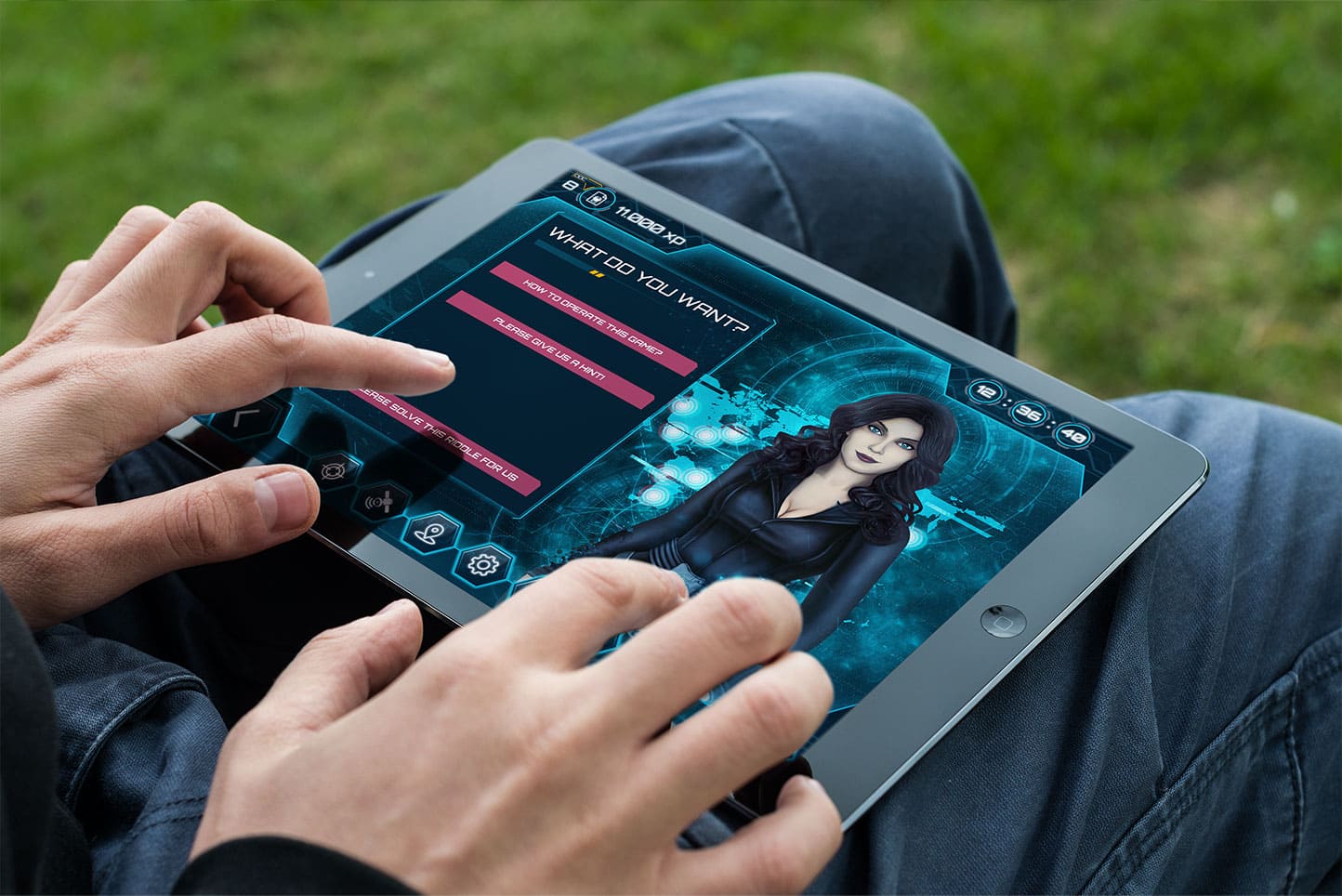Education and technology aren’t something that always go hand-in-hand. Quite often, the term education is synonymous with outdated materials that fail to connect with the new generation. However, the year is 2020 and there are new exceptions to the rule. More and more schools, universities and other institutions are discovering how to use educational escape rooms to deliver lessons. Gamification is the key word, but what’s the real meaning behind it? Read ahead to find out how you can benefit as an escape room operator.
What can you expect from this article?
- The definition of gamification
- Why gamification is so promising in education
- From sustainability to linguistics: the wide range of educational escape room scenarios
- How escape room operators can benefit from the development of gamification
What is Gamification?
Have you ever tracked your steps to get a bonus from your health insurance company or as a competition among your colleagues? Do you sometimes start learning a new language and receive a badge after each lesson? Perhaps you use review sites like Yelp and TripAdvisor and look forward to seeing how well your posts rank? If you do any of these, then you already have an idea of what gamification is.
Gamification is mainly a marketing-driven development. Rather boring topics and processes are to be made more interesting for the user by means of playful elements. This can be achieved, for example, by awarding rewards for achieving certain goals. These can be virtual “badges”, as well as real rewards in the form of products, coupons or discount codes.
Many people are also motivated by the idea of tracking their progress. Whether it’s a point or percentage display until a task is completed, or a progress bar, gamification affects people in many ways without them noticing.
Why Gamification is so Promising in Education
Gamification has great potential in the field of education. For years, children’s attention span has steadily declined, as has adult’s attention spans. Overstimulation from electronic devices is ensuring that our concentration spans are becoming shorter and shorter. When it comes to absorbing rather dry information, distractions come far too easily. Gamification can become a counterpoint here.
The playful communication of information does not have to be restricted to the classroom. There are also exciting gamification approaches for staff-training and team-building measures in companies.
Educational escape rooms are a form of gamification at school and work. Educational institutions have only recently taken advantage of this opportunity – and often lack the know-how to design a story, puzzles and props. This is where you come in as a professional escape room operator!
From Sustainability to Linguistics: Wide Range of Educational Escape Room Scenarios
There have already been some escape-room-inspired experiences in schools and universities. Sustainability has been one of the most popular topics so far.
In April 2019, Harvard Students were tasked with designing an Escape Room to learn about sustainability. Players had 25 minutes to solve the puzzles before a tidal wave captured them. The puzzles focused on questions related to recycling, waste disposal and energy consumption. The escape game was organized by members of the Harvard Resource Efficiency Program (REP) – and was met with acclaim.
Sustainability was also at stake in an educational escape room organised by social media network LinkedIn, for their employees. The challenge, aptly titled Escape from Climate Change, was so successful that some LinkedIn employees teamed up with an NGO to make the escape game known beyond the team event.
At a workshop during the University Forum Digitization, the participants developed Germany’s first digital linguistic escape room. The game, The Linguist’s Lair (TLLp), virtually guides students through different rooms which are assigned to linguistic topics, such as “syntax” or “pragmatism”. In order to master all rooms, students need to find clues and solve the grammar-centric puzzles.
The “OEB Global: Shaping the Future of Learning” conference in December 2020 is a suitable event discussing the what is in store for education over the next few years. Attendees can expect to participate in a workshop entitled “Serious Gaming: Designing an Educational Escape Room“. The speakers from Utrecht University will discuss the interplay of technology and education, whilst designing a pop-up escape room with the aim to demonstrate how they can be used for educational purposes.
How You Benefit from the Rise of Gamification
Gamification in the education sector and escape rooms for learning are certainly more than just a temporary trend. As it is still a new topic, you have the chance to become a pioneer this field.
For example, design puzzles and questions for a so-called breakout. Breakouts are played directly in the classroom and are dedicated to a specific topic. It is up to you whether you design the “treasure hunt” completely analog or integrate a mix of analog and digital tasks.
A breakout as an escape room for learning does not require a large investment. However, the possible applications are quite limited, and the games must usually take place indoors.
With a software like Cluetivity, you have more options. Cluetivity offers both ready-to-play missions with a child-friendly story in Magic Portal as well as many customisation options, allowing you to create educational games for children and adults on all possible topics. As a mobile escape game, Cluetivity works anywhere in the world. No complex setup is required.
Of course, you can also use Cluetivity for other purposes such as children’s birthdays, corporate events and bachelor parties. We’ve developed the software specifically to give you virtually unlimited options to expand your business.
Alternatively, you can of course also develop your own educational escape rooms. It is important that they can be adapted to different topics with ease. They should also be portable so that you can bring your games directly to your customer.
Whatever lessons you teach with Cluetivity, you will definitely be a key-player in revolutionising education!
